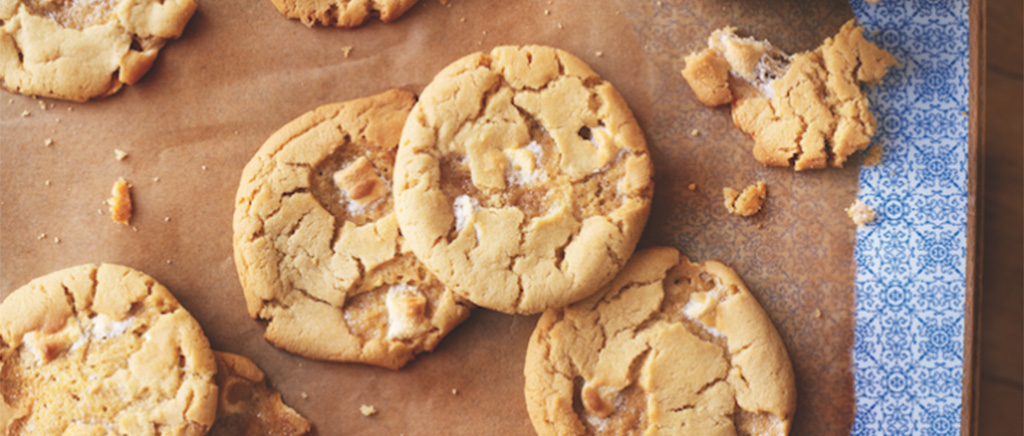- 03300 945 855
- Showrooms
- Book a Consultation
- Blog
- About
- Trade
- Contact
- My Account
Lazy Sunday: How to bake the perfect cookie
With the Macmillan World’s Biggest Coffee Morning next Friday, get your baking hat on and practice the perfect cookies to really wow your colleagues. Whether you go for chewy American style or caramelised crispy cookies, these top tips from the experts at Hummingbird Bakery mean you will bake a winning batch every time!

Eggs
For a chewy cookie, look for a recipe with plenty of egg in the dough. Chilling the dough before baking will also make the cookie chewier.
Sugar
Brown sugar, rather than white caster sugar, adds a caramel flavour and colour to your bakes, so recipes with some brown sugar added will give a more golden brown cookie with a sugary crisp top. Using only white caster sugar will result in a softer, flatter cookie. Darker muscovado sugars and molasses both give a really deep caramel flavour and colour and will make the cookie soft. Using liquid sugars, like maple syrup, will also make for a softer cookie and will impart extra flavour.
Flour
We use mostly plain flour in our cookies, which is easy for home bakers to get their hands on, but it’s also possible to use mixtures of different flours to get a more cake-like texture, e.g. by adding cake flour or strong bread flour into the mixture. This will make a bouncier, cakier cookie that will turn out much more domed – think almost like a cookie crossed with a scone. A word of caution: too much flour and your cookies may end up dry.
Butter
Creaming together the butter and the sugar is an important step and is the point in the cookie-making process where you get to add air to your mixture. This helps the cookies to rise in the oven. This step should take around 5 minutes, so don’t be tempted to switch off your mixer after two minutes or your cookies will turn out heavier.
Raising agents
Some of our cookie recipes call for baking powder and some call for bicarbonate of soda. Baking powder gives a less heavy texture and will make the cookies puff up more like a cake, compared to bicarbonate of soda.
Temperature
Chilling your cookie dough beforehand will stop the dough spreading out as quickly on the tray when baked, so if you like a thicker or thinner cookie, bear this in mind. The general rule is: chilled dough for thick cookies, room temperature dough for thinner cookies. Using room temperature ingredients (such as butter) will also make the cookies melt quicker and bake thinner than if it comes straight from the fridge.
Rolling out
Shaping your cookies is all about presentation. If you want to get hands on and messy, breaking off a piece of dough and rolling it into a ball will give you a more rustic, homemade shape. This is lots of fun to do and if you have little helpers in the kitchen, give them a go at rolling out the dough in their palms. For uniformity, you can use a small food portioner to scoop out equal amounts of dough, providing the dough is soft enough to scoop in the first place. Alternatively, rolling your cookie dough into a sausage-shape and slicing will give you perfect rounds for that shop-bought look but with a homemade taste!
For more recipes and baking tips head to www.hummingbirdbakery.com/blog/
